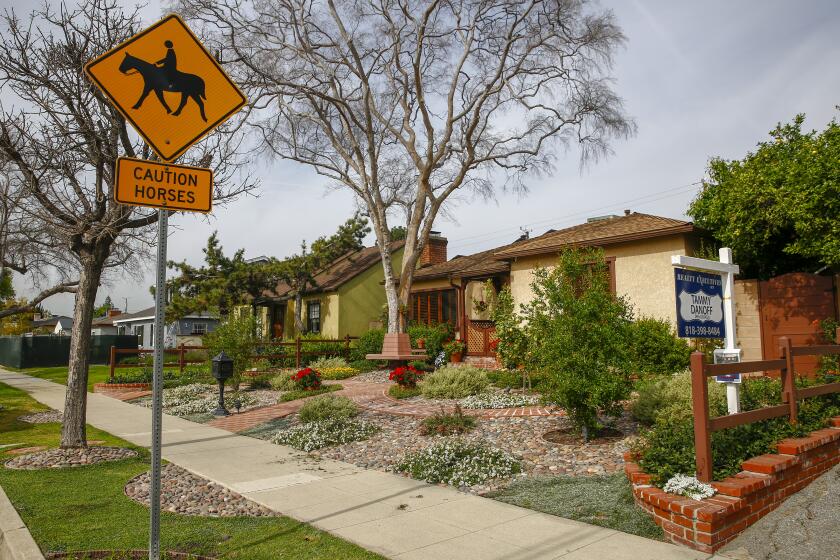California’s population has fallen for the first time in history
- Share via
California lost 182,083 people in 2020, marking the first population decline ever recorded in the state and underscoring larger trends that recently led to the loss of a Congressional seat.
California’s population is now just less than 39.5 million. The state had shown very small annual increases for the last several years.
Once the fastest growing state in the nation, California saw its population increase from 2 million in 1900 to 34 million in 2000. But that pace of growth has slowed in the new millennium.
“Much has been made of the California exodus, and rightly so,” Hans Johnson, a senior fellow at Public Policy Institute of California, wrote in a recent report. “This migration, over the decades, has the power to reshape the state.”
Indeed, U.S. Census Bureau data released last month revealed that California would lose a Congressional seat for the first time in its history due to its sluggish growth.
Though the state registered a population of 39.5 million, up more than 2 million from the last census, the rate of growth was lower than the national average, stripping the state of one of its 53 Congressional seats. Texas and Florida both gained seats, reflecting the southward shift of the nation’s center of gravity.
The U.S. Census Bureau released apportionment data, but the pandemic-induced lag has already caused ripple effects on redistricting and 2022 races.
Even after losing one seat, California’s 52-member delegation will remain the largest in Congress, followed by that of Texas, which will have 38. The more granular data required to redraw the state’s district boundaries are not expected to be released until the fall.
A major force in California’s declining population has been the exodus to other states. The state has seen more people leave than move in from other states for much of the last three decades. In the last decade, about 6.1 million people left, while 4.9 million moved to California from elsewhere in the nation, according to Johnson. However, that had been more than offset by immigration and births.
The majority of those who left California over the past decade cited jobs or housing as the main reason, according to a PPIC survey.
The forces pushing people out of the state are also changing who comes in. Those who move to California are more likely to be employed, earn high wages and have higher education levels than those who move away, according to PPIC.
“The larger picture painted by these trends illustrates the economic challenges faced by many lower- and middle-income Californians,” Johnson wrote.
“The state’s high cost of living, driven almost solely by comparatively high housing costs, remains an ongoing public policy challenge — one that needs resolution if the state is to be a place of opportunity for all of its residents.”
We’re not losing high-income people fleeing California taxes, columnist George Skelton writes. More affluent people have been moving here than departing because they can afford our escalating costs of living.
John Cox, a Republican who is running for governor if Gov. Gavin Newsom is recalled, blamed Newsom and other state officials for the decline.
“They are driving thousands of families from California,” Cox tweeted.
California’s population has become a political issue this year in light of the effort to recall Newsom, with Republicans blaming high taxes and the governor’s policies for people fleeing the state.
Since 2015, the number of foreign-born people living in California has also been shrinking, said Julia Gelatt, a senior analyst at the Migration Policy Institute. People may be leaving California or choosing not to immigrate there due to the high cost of living, she said.
“It makes it really difficult to make ends meet,” she said. The shift may also be driven by a shift in larger immigration patterns over the past decade. Before 2010, Mexico was the main source of immigrants to the U.S. and many of them came to California. But China and India have since taken over as the leading countries sending immigrants to the U.S.
The state Department of Finance says it expects California to add population next year.
The Associated Press contributed to this report.
More to Read
Sign up for Essential California
The most important California stories and recommendations in your inbox every morning.
You may occasionally receive promotional content from the Los Angeles Times.














